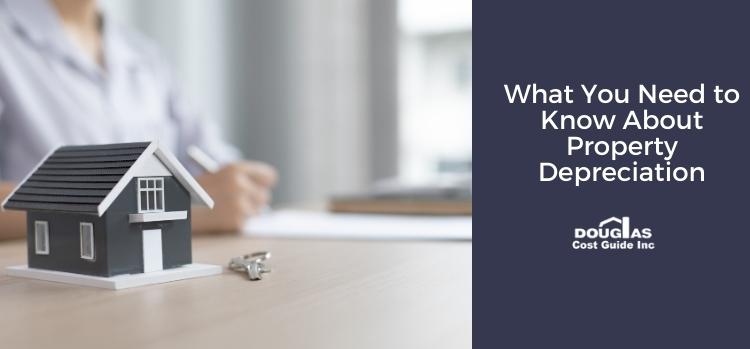Many factors affect the value of your property, and depreciation is a major aspect of property assessment, particularly when it comes to calculating Actual Cash Value and Replacement Cost. Douglas Cost Guide can help you take depreciation into account to give you an accurate estimate of both your property’s current value and its replacement cost.
What is Property Depreciation?
Property depreciation refers to the diminishing value that a residence or building experiences over time as it’s being used. The longer a residence or building has been used or inhabited without replacement, the greater it will depreciate. There are three main types of property depreciation that affect your property’s value over time.
Types of Property Depreciation
There are three types of property depreciation. Each refers to different aspects of your property that depreciate its value. Those three types are:
- Physical Obsolescence
- Economic Obsolescence
- Functional Obsolescence
When Does Depreciation Apply on a Residence or Building?
Physical Obsolescence
Physical obsolescence refers to the deterioration of physical features of your property, including things like peeling paint and a leaky roof.
Economic Obsolescence
Economic obsolescence means that external market factors are contributing to a property’s value decreasing. For example, if a large factory in town decides to relocate and many workers are laid off, your property value may depreciate because the area is now less desirable.
Functional Obsolescence
Functional obsolescence relates to shifting property standards in your area. For example, if it becomes standard for homes in your area to have three bedrooms, but your home only has two, your property value will depreciate because it doesn’t meet the new standard.
All properties are subject to some type of depreciation as they age, and as external market forces evolve.
Actual Cash Value Versus Replacement Cost
Actual Cash Value (ACV) refers to the value an item has today, at its current age, and in its present condition. Replacement cost, on the other hand, refers to what it costs to replace an item with a new item of similar quality.
As an example, if your home is destroyed by fire and your policy pays out based on ACV, you will receive a cash payment equal to the current value of your home prior to its destruction. This means that if your home has experienced depreciation, the payout you receive may be far less than it would cost to rebuild your home.
If your policy is based on replacement cost, your insurance company pays out according to what it will cost to rebuild your home with modern materials and current building costs, regardless of your home’s value.
Replacement cost safeguards you and your most important assets in case of a total loss, and that’s why we recommend that you calculate your replacement cost and purchase a policy based on this estimate.
Estimate Your Replacement Cost with Douglas Cost Guide
Calculating your replacement cost doesn’t have to be complicated. Douglas Cost Guide provides trusted, up-to-date tools to help you accurately estimate your replacement costs. Subscribe today for access to industry insights, data-driven estimates, and much more!

